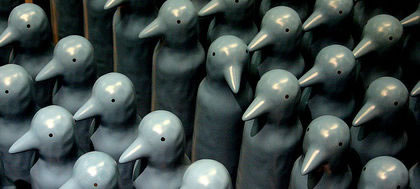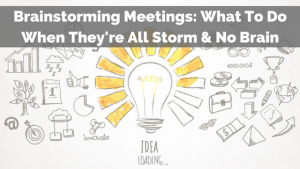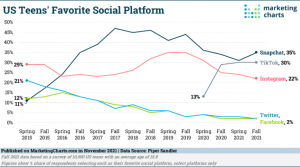
High-performing teams share a commitment to the mission, not the same ideas
With innovation and globalization defining the competitive edge of 21st century organizations, rigid structures can no longer accommodate the elaborate interactions that need to occur between the technologies, stakeholders and talent in a given enterprise. Building a high-performing business begins with people. However, it involves more than hiring individuals with the proper qualifications, skill sets, education and work experience — it’s about seeking out talented and creative performers who can deliver results. More importantly, regardless of business culture, success comes from building teams that avoid “groupthink.”
Micro-cultures emphasize diversity of thought and alignment of goals
Building a culture that encourages creativity and innovation is a mission-critical strategy for forward movement and sustainability. And these efforts do require change. Maybe a lot. Every organization has a culture, defined at the top for the business. However, different micro-cultures exist at the team level. Finance and customer service are distinct teams with unique drivers, skills and roles. They also have different cultures.
To build a stellar team, members must mesh well with the ideals and culture of the groups they’ll serve, while reflecting the macro culture of the organization. However, they shouldn’t always agree. Innovation can’t spring from a team that promotes groupthink or makes universal agreement on concepts and approaches a measurement of success.
Performance is about process, not outcomes
The best ideas are born from a congress of talented people who are given the opportunity to voice unique views and even healthy dissent. Without facilitating an open culture that considers diverse opinions, organizational leaders may never uncover the freshest perspective or next big idea. This is where the importance of process comes into play. As Decision Toolbox CEO Kim Shepherd clarifies in her recent Fordyce Letter article, it’s a problem that occurs when we focus on output over process: “The performance-driven workforce (PDW) model is NOT about outcomes. It is about process.”
Shepherd notes that positive outcomes flourish organically when we place greater emphasis on the process. She offers a clever analogy between low sales and a drought: “Think about the low sales example as a drought. You need rain. But rain doesn’t come because plants are thirsty. Rain comes because water evaporates into vapor, then condenses in clouds and falls. Dreaming about lush plants won’t bring the rain — concentrate on the mechanics.”
Farmers, she further illustrates, don’t hit the fields every morning and pick ripened fruit. Most of their efforts involve sowing seeds and nurturing them until the harvest naturally comes in. Yet we also know that not every plant will grow if tended the same way. Variances in soil, watering schedules and levels of sunlight affect crops differently. If all the farmers were ordered to plant three unique vegetables the same way, only one may survive.
So to take this insight a step further, particularly in context of a business preparing to grow, part of a strong process must include a thoughtful balance between divergence (differing perspectives of team members) and convergence (ultimate agreement of the group). By focusing exclusively on desired outcomes, we run the risk of unwittingly enforcing an atmosphere of conformity and agreement.
Rethinking the thinking behind group brainstorming sessions
Art Markman, Professor of Psychology and Marketing at the University of Texas at Austin, delivers a refreshing examination of the traditional group dynamic in modern workplace cultures: “A key element of creativity is bringing existing knowledge to bear on a new problem or goal. The more people who can engage with that problem or goal, the more knowledge that is available to work on it. Unfortunately, quite a bit of research demonstrates that the traditional brainstorming methods first described by Alex Osborn in the 1950’s fail. When groups simply get together and start throwing out ideas, they actually come up with fewer ideas overall and fewer novel, actionable ideas than the individuals in that group would have come up with had they worked alone.”
To optimize idea generation in groups, especially as savvy organizations transition into hyper-productive networks of micro-cultures, business leaders need to identify when to diverge and when to converge.
Divergence takes place when members of a group are tasked with creative “alternate uses” exercises, such as being told to conceive all the possible applications for a glass. All will agree that its primary purpose is to hold liquid. However, when left alone to ponder the puzzle, each member will eventually come up with creative solutions that may escape a group. Some may use the glass as an instrument to eavesdrop on the other side of a wall. Some may shatter the glass and use its pieces to make art, such as a mosaic. Still others may suggest melting the glass down and reshaping it into an entirely different instrument. The point is, a lot of novel ideas won’t emerge when the group is told to brainstorm this exercise together.
“The core principle of group creativity is that individuals working alone diverge, while group members working together converge,” Markman states. “In group settings, as soon as one person states a potential solution to everyone else, that influences the memory of every person in the group in ways that make everyone think about the problem more similarly. That is why groups working together diverge less than individuals working alone.”
Practical tips for diverging and converging in problem-solving teams
Although we seem be presented by a conundrum, we can have the best of both worlds — where individual thought and group consensus co-mingle happily.
- At the beginning of the project, concentrate on process and consider the problem itself rather than asking team members to agree on the outcome.
- Break the team apart to allow the individual members to conceive and craft descriptions of the problem. When the group reforms, there will be many distinct and thought-provoking statements to consider. During the discussion, productive convergence will occur as the team whittles down the core concept to a single theme or small number of variants to tackle.
- Now it’s time to work up a solution. And that means it’s time to diverge again, allowing individuals to conceptualize solutions by building on the ideas shared during the first phase. Because they’re free to work independently, their proposed solutions will remain unique.
- Finally, we unite the team once more to converge. The ideas will be presented to the entire group for discussion, consideration, evaluation and ultimately agreement. The group will naturally determine the best approaches for taking action — and they will do so harmoniously.
As Markman concludes: “This process maximizes the contribution of the group. Everyone gets to engage their knowledge in service of the problem to be solved without having their memories influenced by other people’s solutions. Everyone also gets to enhance the ideas generated by their colleagues. Finally, the group gets to work together to build further on the ideas and to evaluate the candidates.”
Preventing groupthink creates a culture where people are together yet not the same
We naturally gravitate toward like-minded individuals. Familiarity breeds comfort, and we often seek out peers, friends and colleagues who share similar qualities with us. And that creates an unintentional bias. If you really think about it, your friends and loved ones may not be ideal co-workers. Love and admiration aside, they might not fit your business culture or the job at hand.
When building results-oriented teams to drive business growth and innovation, it’s important to design a culture that emphasizes unity while embracing diversity. By promoting a strategy based on a solid balance between divergence and convergence, business leaders can break the restraints that suppress creativity and discovery.
Business & Finance Articles on Business 2 Community(58)








